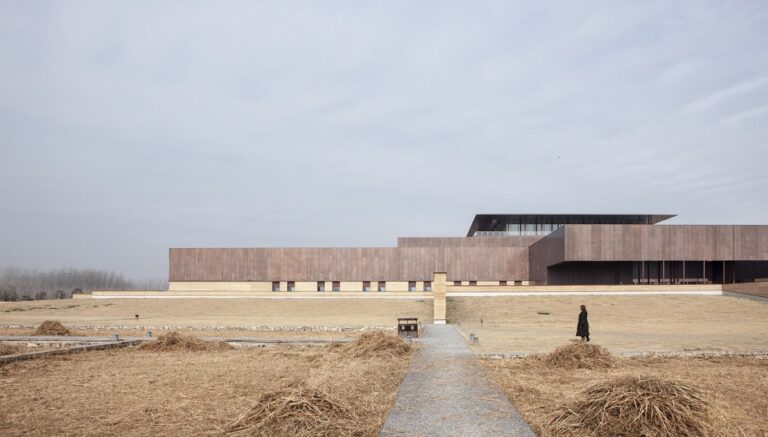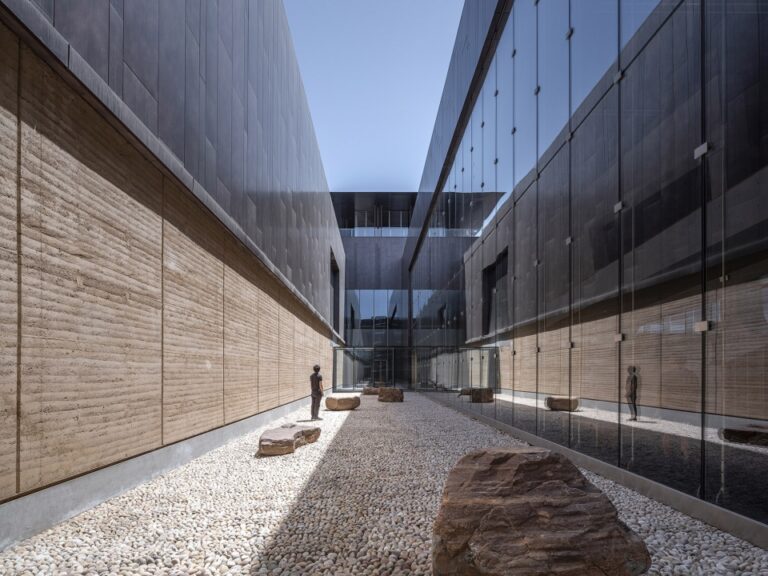Healthy buildings and earth materials
1. Definition of healthy building and its impact on human health
2. Design principles and standards for healthy buildings
3. Selection and use of materials for healthy buildings
4. Specific examples of building materials: raw earth
5. The major difference between rammed earth and traditional rammed earth used in modern buildings
6. Case studies of raw earth construction
-Definition of healthy buildings and their impact on human health:
Healthy buildings are people-centred, creating a healthy, comfortable and safe indoor environment through scientific design and material choices that promote people’s physical and mental health and productivity. (Allen, J. and Macomber, J. 2022.)
Healthy buildings can have a significant impact on human health by improving indoor air quality, reducing noise and vibration, improving lighting and temperature control, and reducing problems such as infections and allergies, thereby improving people’s health and quality of life. (Lin, Yaolin,2022)
-Design principles and criteria for healthy buildings:
Human-centred: Buildings should meet people’s health and comfort needs in terms of air quality, temperature, lighting and acoustic environment.
Energy conservation and environmental protection: Buildings should adopt low carbon and environmental design concepts, including energy and water conservation, waste reduction and the use of environmentally friendly materials.
Structural: Buildings should be structurally strong and durable, meeting seismic safety standards and fire safety requirements.
Safety and health: The building should use non-toxic, non-hazardous and non-radiating building materials and furniture to avoid any harm to humans.
Natural ventilation: The building should be designed with natural ventilation to ensure indoor air circulation, reduce the concentration of pollutants and increase the oxygen content of the room. (Loftness, Vivian, 2007)
Healthy lighting: Buildings should use lighting that is compatible with human health, especially daylighting, which can improve people’s psychological state and sleep quality.
-Material selection and use for healthy buildings:
Green building materials: e.g. bamboo, wood, straw, soil, lime, moss, etc.
Environmentally friendly building materials: such as formaldehyde-free panels, low VOC paints and flooring, etc.
Energy efficient materials: such as thermal insulation and solar panels
Water treatment materials: e.g. rainwater collection systems, plant filtration ponds, etc.
Health building materials: such as bamboo charcoal products, negative ion panels, air purifiers, etc.
-Concrete examples of building materials: raw earth
The history and current use of raw earth in China: raw earth is one of the oldest and most widely used traditional building materials in the world, especially in China, where its use dates back at least 8,000 years to the Neolithic period. (Jiang Chunfang, Mei Yi, Chief Editor – Encyclopedia of China . Architecture, Landscape Architecture, Urban Planning : Encyclopedia of China Press , 1992.1) The traditional Chinese society often used the term ‘the work of earth and wood’ as a general term for all construction projects. The name of the construction project. It is clear from this that raw earth, along with wood, is as important a part of traditional Chinese construction techniques and architectural heritage.

- distribution of traditional earth construction in China
-The most important difference between rammed earth and traditional rammed earth construction is the use of rammed earth in modern buildings.

- composition and grading of earth
The rammed earth process is widely used because it has a series of advantages that meet the needs of this type of housing construction: rammed earth can be taken from the local area and adapted to the local conditions; it is simple, quick and inexpensive to build; rammed earth walls have outstanding heat storage properties, which make the interior of the house warm in winter and cool in summer, and its ability to absorb moisture is 30 times greater than conventional industrial building materials, which can effectively balance the humidity in the room, which is more effective in the hot and humid climate of southern China and the dry and cold climate of the north. The effect is even more pronounced in the hot and humid climate of southern China and the dry and cold climate of the north. In particular, from the perspective of today’s ecological sustainability, rammed earth materials are renewable and can be reused repeatedly after the demolition of a house, or even returned to farmland as fertiliser. However, it is undeniable that there is still a large gap between the material mechanics and durability of traditional raw rammed earth and conventional wall materials such as sintered bricks and concrete. (Li Nan.2017.)

- construction process of upgraded rammed earth
-Healthy architecture case sharing and commentary:
▼external view of the museum

▼earth and copper

Erlitou Site Museum Project (The Erlitou Site is located in the core of the Luoyang Basin in Henan Province, China, in an extremely privileged geographical environment. The Erlitou site, with an extant area of about 3 million square meters, was the largest capital settlement in China and East Asia at the time, and is recognized by academics as a capital site of the middle and late Xia dynasty, making it the most important starting point and yardstick for exploring the origins of Chinese civilization and statehood.) , the museum building is presented using raw earth walls interspersed with an envelope made of other materials.
(https://www.eltxdmuseum.com/aboutus/c/34)
▼courtyard and details of the combination between different materials


The museum uses a reinforced concrete frame structure with rammed earth walls as an enclosure. Therefore, the focus of the special design of rammed earth walls is concentrated on the structural level, which includes the internal construction of rammed earth walls and the construction of connections between rammed earth walls and structural beams and columns, doors, windows, pipes and equipment, and other components or other materials. In addition to meeting the basic seismic safety requirements, the design of the structure must respond to, and even take advantage of, the characteristics of the rammed construction process and work in conjunction with the simultaneous construction organisation design.










This article was very interesting to me because it is an indispensable stage in the process of doing a project, where the use of building materials is a concern for the safety risks of the inhabitants and the global environmental impact. Healthy building materials meet the needs of the building structure and the safety of the building. Whether it is an outdoor space or an indoor space, there is a need for safe and healthy material composition. The human-centred approach in this article is the underlying concept of all design, which then requires the creation of healthy, comfortable and safe environmental spaces that promote the physical and mental health of people and protect the environment.
While using healthy materials, it is important to select different healthy materials to be used in different spaces according to the geographical and climatic conditions of different regions, and to achieve sustainable low carbon cities. To this end, I have summarised the following measures, which I hope will help.The use of materials for outdoor spaces has become more widespread, with the use of ready-to-use materials. The use of timber for outdoor features or the transformation of recycled materials into new materials saves materials while creating infrastructure such as railings and rubbish. In this project I have used solar lighting systems, rechargeable or solar water heaters to make the outdoor space less dependent on traditional energy sources, reducing energy consumption and carbon emissions.
rference
Fuller, M. C., Portis, S. C., & Kammen, D. M. (2009). Toward a low-carbon economy: municipal financing for energy efficiency and solar power. Environment: Science and Policy for Sustainable Development, 51(1), 22-33.